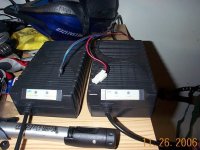knightmb
100 kW
I wanted a bike that could go faster and farther that the typical converted e-bike. The key was to go for large wheels and with low rolling resistance, good road tires, and more power! On a level riding surface, high air pressure in tires, and ideal riding conditions such as cool temperatures, no wind, partly cloudy, etc. You can easily get 50 miles on a full charge at 20 MPH average speed.
I've also done a more "real world" test with hills and obstacles such as people to slow down, speed up, etc. Under these conditions, the bike can still achieve a good 36+ miles of range without any pedaling.
I've also done a more "real world" test with hills and obstacles such as people to slow down, speed up, etc. Under these conditions, the bike can still achieve a good 36+ miles of range without any pedaling.
Attachments
-
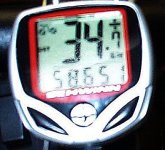 Top_Speed2.jpg36.8 KB · Views: 6,689
Top_Speed2.jpg36.8 KB · Views: 6,689 -
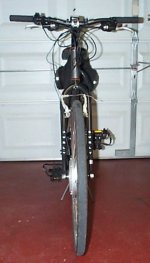 Front_View.jpg26.9 KB · Views: 6,687
Front_View.jpg26.9 KB · Views: 6,687 -
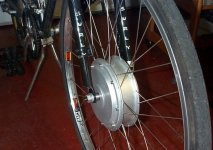 Front_Wheel.jpg44.2 KB · Views: 6,679
Front_Wheel.jpg44.2 KB · Views: 6,679 -
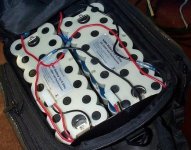 power_cells.jpg36.5 KB · Views: 6,680
power_cells.jpg36.5 KB · Views: 6,680 -
 throttle.jpg19.6 KB · Views: 6,680
throttle.jpg19.6 KB · Views: 6,680 -
 Rear_Bike Pack.jpg26 KB · Views: 6,680
Rear_Bike Pack.jpg26 KB · Views: 6,680 -
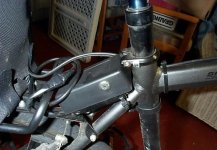 speed_controller.jpg48.3 KB · Views: 6,682
speed_controller.jpg48.3 KB · Views: 6,682 -
 e-bike-04.jpg48.9 KB · Views: 6,184
e-bike-04.jpg48.9 KB · Views: 6,184 -
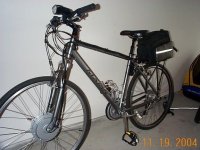 e-bike-02.jpg47.3 KB · Views: 6,177
e-bike-02.jpg47.3 KB · Views: 6,177 -
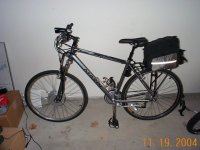 e-bike-01.jpg39.2 KB · Views: 6,182
e-bike-01.jpg39.2 KB · Views: 6,182


